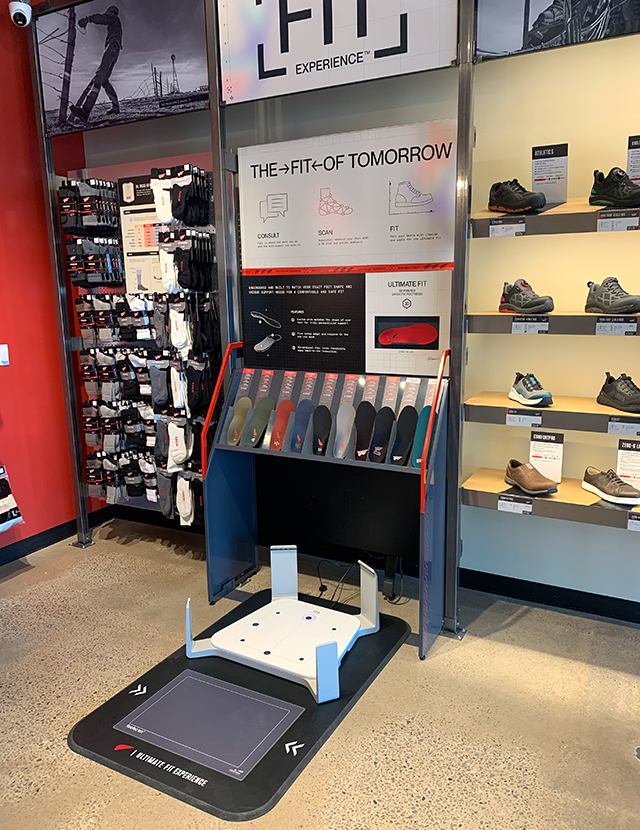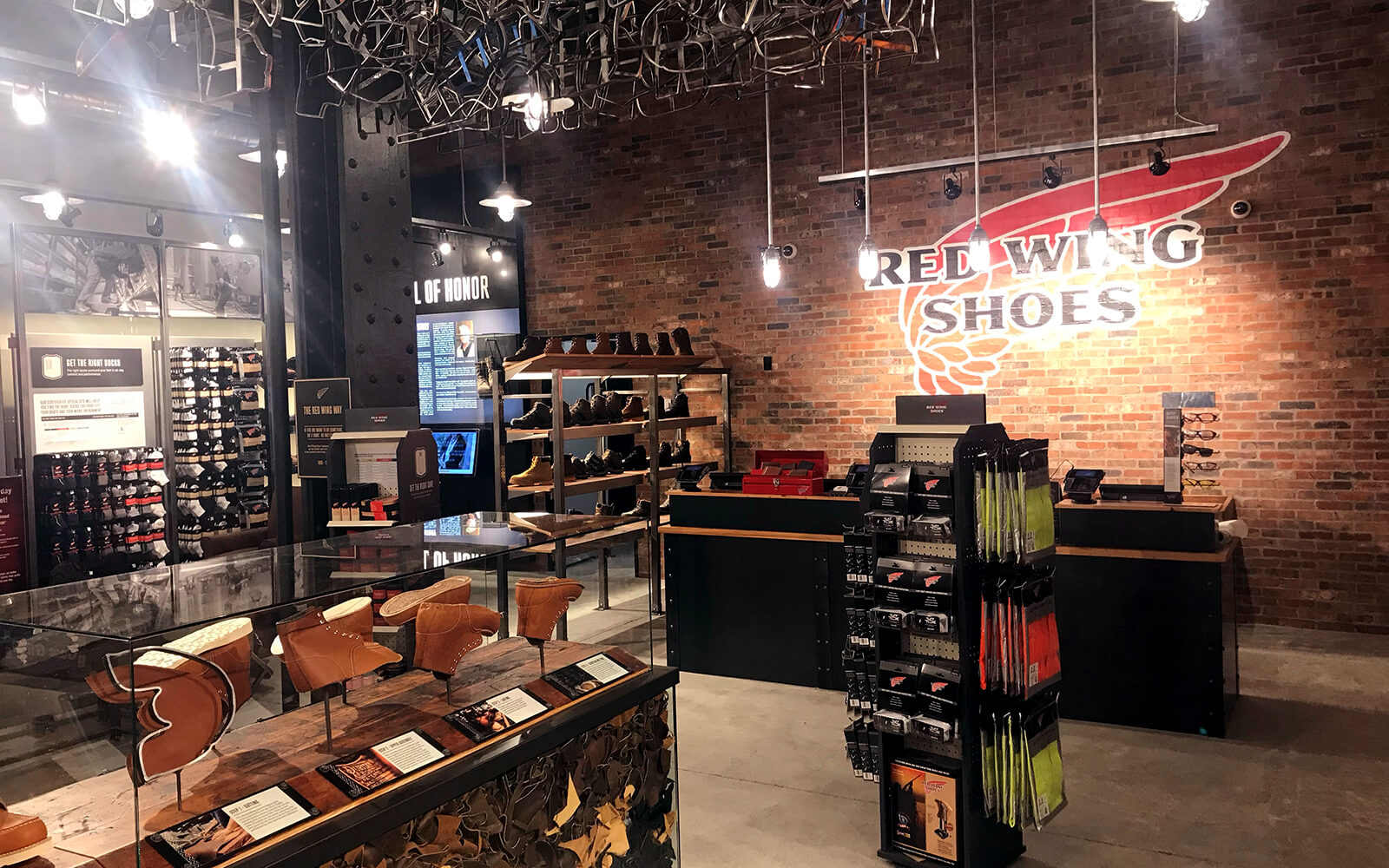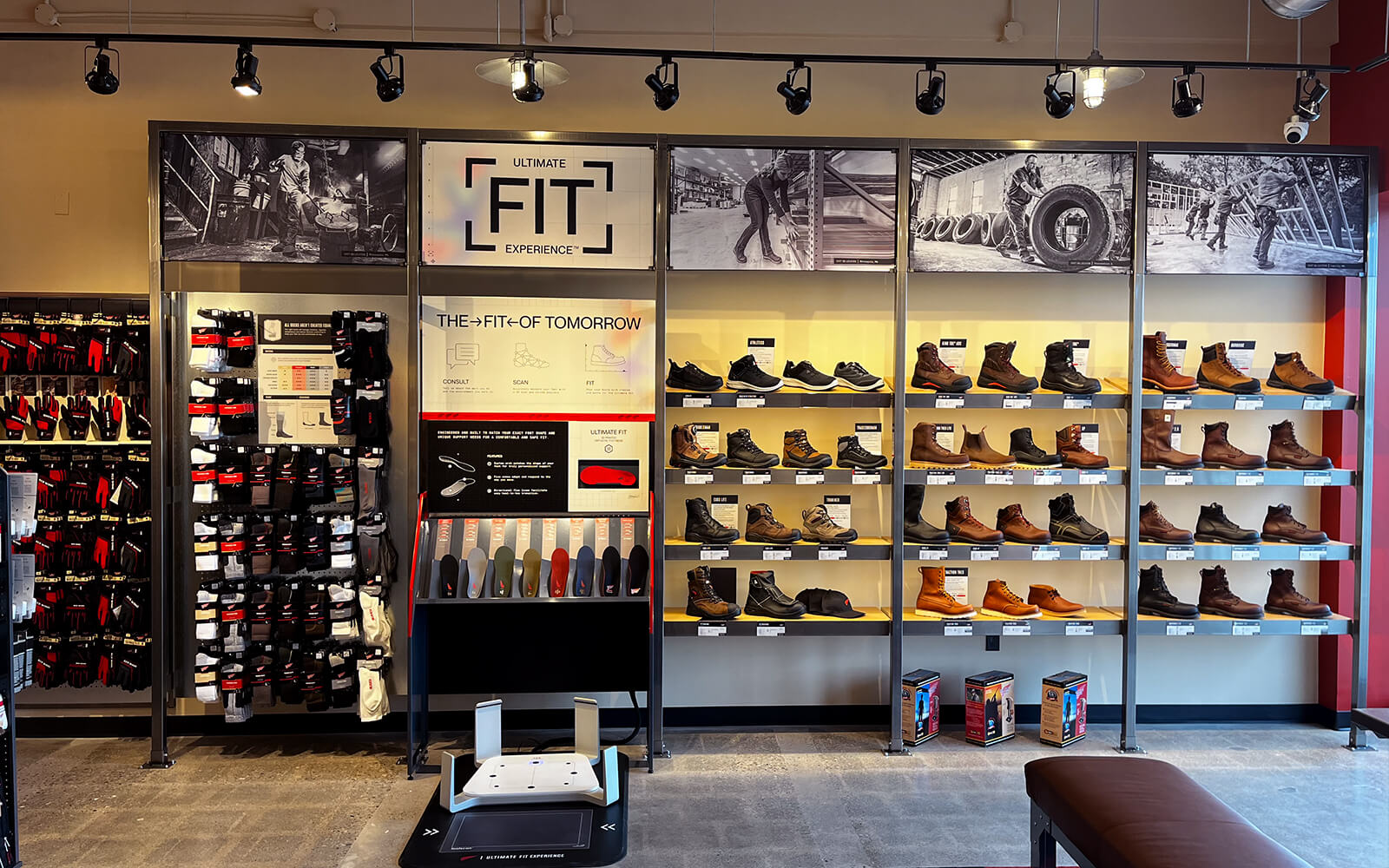|
Getting your Trinity Audio player ready...
|
Consumer products retail—the footwear category in particular—is generally thought to be conducted either online or in brick-and-mortar stores. Red Wing Shoes has both of those, but also sells its work and lifestyle footwear via a third venue, which consists of two axles and a transmission.
Yes, the Minnesota-based company has a fleet of about 100 mobile shoe stores, in addition to its on-site and online stores. The mobile shoes stores are outfitted on light-duty trucks that go where consumers can be found. As the company researches the consumer makeup of different geographies, it asks: does this consumer prefer to buy via brick-and-mortar retail stores, mobile shoe trucks, or online?
“Our shoe stores on wheels help us serve commercial accounts,” says Jaime Lenczewski, director of global retail projects for the century-old, vertically integrated, global manufacturer and seller of shoes, work wear, and accessories. She explains that many employers provide vouchers to their workers that make the brand’s shoes a likely preference. “We find consumers at their jobs.” The strategy is not new: company’s first mobile shoe truck hit the road in 1963.

Lenczewski is tasked with expanding the company’s number of brick-and-mortar retail, which might be related to the reshoring of manufacturing jobs to the US, as well as the strong construction sector that now begs for workers.
According to the Association of General Contractors, construction employment grew in 45 US states in 2022, with job growth in places such as Texas (34,800 jobs added that year), Florida (23,600 jobs), New York (21,900 jobs), and Tennessee (14,000 jobs) leading the pack. Job growth is occurring also in manufacturing, albeit at a slower pace but with the winds of government and private sector investment in renewable energy and infrastructure-supply industries at its back.
That’s a lot of feet needing a lot of shoes.

In fact, the company plans to significantly grow its unit count over the next 5 years, largely through its dealer-owned opportunity model. “We used to build about 10 stores per year,” Lenczewski says. She says they are in a “assess and prepare” phase in 2023, building rapid-growth can-do plans for what’s to come. She heads up a core team of planners who represent 15 functional areas that will be needed to support this rapid growth.
“We look at the work streams and evaluate what needs to be done,” she explains. The expansion is focused on every US state and Canadian province. Red Wing Shoes distributes hundreds of products in 110 countries, with physical retail locations in a handful of European and Asian cities.
The family-held company has a well-established culture in which Lenczewski has been immersed since joining the company in 2015. With her own Project Management Professional (PMP) certification, she applies her education to the company’s expansion, one store at a time.

“Each new location goes through four stages,” she says. “It starts with initiation, identifying the location and the [independent store owners], followed by planning, execution [construction], and closing tasks. We have to know what is in our scope and what is not.”
The store design format may be standardized, but no two locations are the same. Convenience is important to Red Wing Shoes customers, and as the company sights real estate, it considers the proximity to where consumers live, work, and shop in order to secure retail spaces that are 1,500 to 1,800 square feet. One exception to this, however, is its flagship store in Manhattan, with 3,300 square feet. “That was fun to build,” Lenczewski says. “We’re always evolving.”
Replicating multiple steps and expanding the company culture while scaling up the planned expansion is a challenging task but one that is possible to achieve on a larger scale. “It’s very important to have a purpose, with transparency, integrity, and trust,” she says, adding that the organization knows it must maintain this culture in the growth phase.

One part of that long-standing culture—addressing thoroughly modern needs and sensibilities—is how Red Wing Shoes repairs products it sold years before (for a fee). To date, about 1.2 million pairs have been taken back to the store where purchased or mailed for resoling, heel or gusset replacements, eyelet repairs, dyeing, restitching, tuff toe adds, relining, and zipper installation. It’s a real sustainability move that, since 1985, has been part of how the company knows its consumers and holds their loyalty.
Lenczewski herself collaborates with the company’s corporate social responsibility (CSR) team, which includes supporting environmental and outdoors causes and providing footwear in the wake of natural disasters, as well as several other philanthropic initiatives.
As Red Wing Shoes expands its footprint across the globe, Lenczewski will be there to support its loyal customer base and its employees alike.
Dating back 20 years, National Awning and Sign and Red Wing Shoes have partnered on hundreds of projects. It has been our pleasure to work with Jaime and her team over this period growing their brand and ours. We look forward to continued expansion with their global retail department and the opportunity to support their Ramp Up Retail vision.


